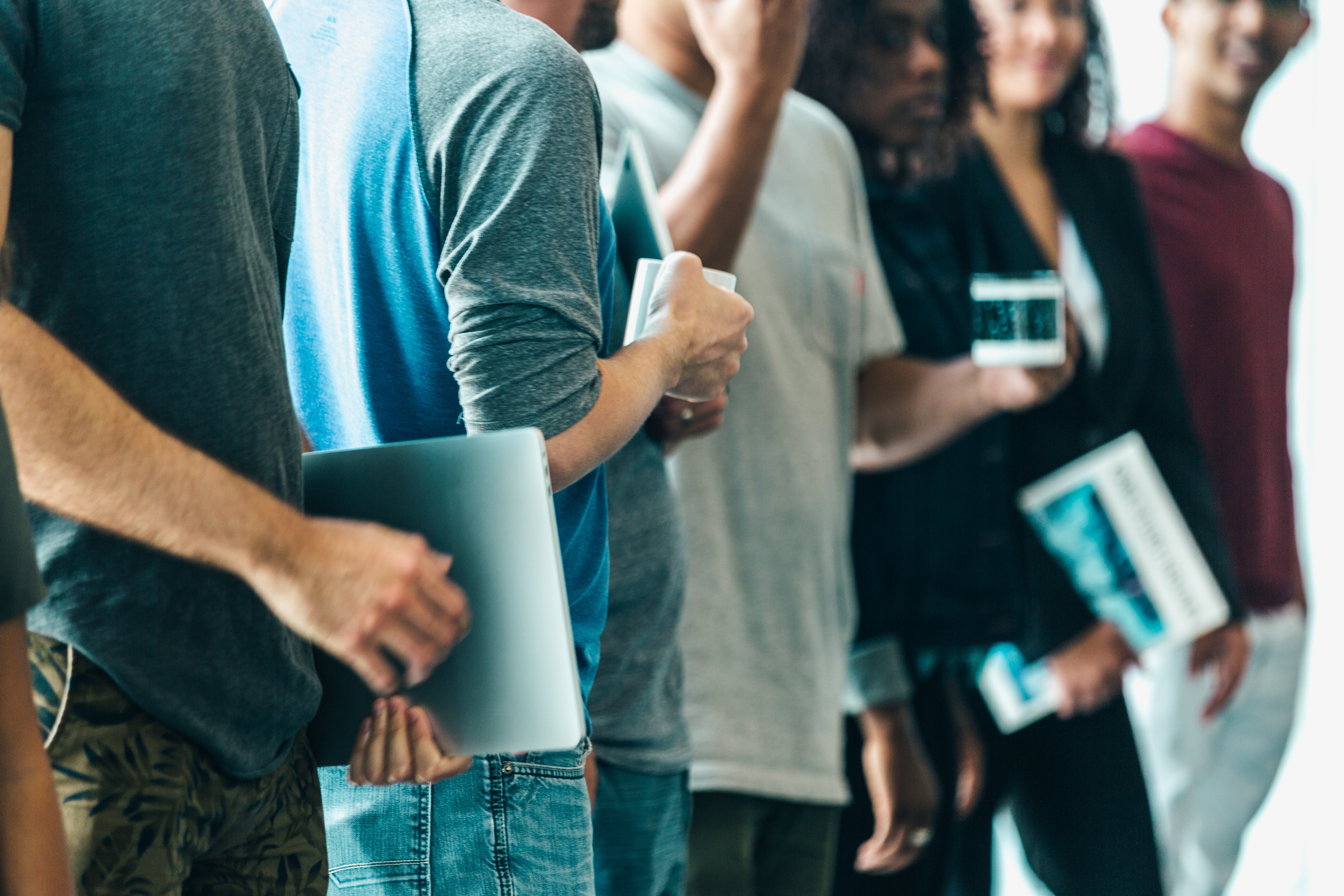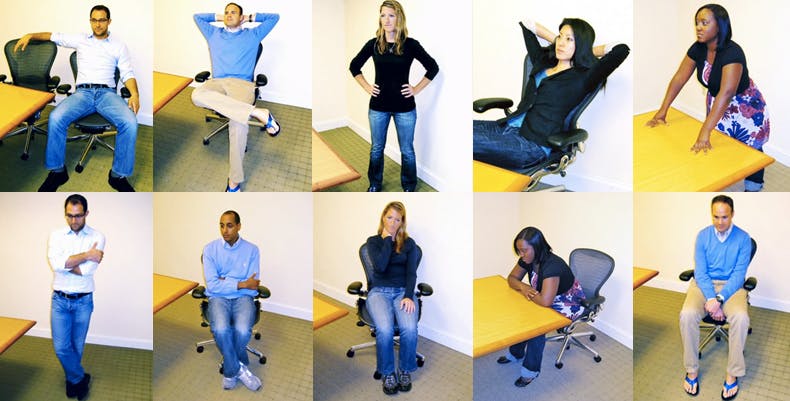
How to build self-confidence at work through body language

You are about to deliver a team presentation and have been anticipating it for the last month. Although you are well-prepared, a feeling of dread washes over you - at least it will be over in an hour’s time!
This situation will be familiar to many, and while you can learn to become a more confident public speaker, you’ll still need to practice and learn to sit with the uncomfortable sensations.
No matter how you feel about addressing a large group, research suggests that one of the quickest ways to improve your confidence in any situation is to make small alterations to your body language.

It is tricky to be aware of how you hold yourself, especially if you sit at a computer for most of the day. Nonetheless, checking in and making a few small adjustments could make you both feel better, and communicate to others that you are self-confident and have a positive mindset.
The mind-body connection
Social psychologist, Amy Cuddy, discusses how body language affects how others see us, but it may also change how we see ourselves.
In her popular Ted Talk, she argues that “power-posing” - standing in a posture of confidence, even when we don't feel confident - can boost feelings of confidence, and might have an impact on our chances for success.
In her study, participants sat either in a high-power pose (in an expansive position) or a low-power pose (leaning inward or legs crossed) for two minutes. Cuddy found that those who sat in high-power poses performed better in mock interviews than those who had adopted the low-power poses.
The two key takeaways from her research were that those who sat in high-power poses not only felt more powerful, but that the poses actively changed their body chemistry.
The New Zealand rugby team performing the haka before every international game is a great example of expansive, powerful body language in action.
How your team can build confidence through body language
Most people can agree workplace communication is very important to a business. After all, when providing a professional service, clear and concise communication with prospects and existing clients is essential. Excellent communication skills are just as crucial when dealing with internal staff. So, how can your team put the science of powerful body language into practice?
In her book, Presence, Amy Cuddy summarises her research and experiences, offering the following tips to get started:
1. Believe in your own story
This sounds simple, but isn’t always easy to do. If you are performing a task or role, and deep down you don’t believe that you are equipped to do it well, this will come across in your body language and others will pick up on it.
If you suffer from imposter syndrome in certain situations, yet your boss or somebody else has chosen you to perform a role or task, do your best to challenge your thoughts and tell yourself a different, more positive story about yourself.
2. Being present - presence begets presence
A great way to be aware of the position of your body and your internal dialogue is to stay present in the moment. Cuddy also explains that presence begets presence, meaning that once you are able to start being present, your will gain momentum and find yourself spending more and more time living in the moment. Mindfulness training is a proven way to train yourself in this skill.
3. Fake it ‘til you make it
If you notice that your self-talk is negative and your confidence is low, you can make simple changes to your body language to interrupt this negative thinking pattern. A gesture a simple as smiling, no matter how you are feeling or what state of mind you are in, has been proven to interrupt negative feedback loops in the brain, and turn them in a more positive direction.
4. Sit up straight
Again, this action might sound simple, but, like smiling, tweaking your posture can really make a difference. It is easy to start slouching when you are sitting down, particularly when your attention is focused on a computer screen or phone. The more you can check in with yourself and readjust, the more you will reap the benefits of having a better posture.
5. Test out a few ‘power poses’
Cuddy identifies a few poses which are helpful for boosting confidence. These are proven to make changes to the body and mind as a whole, so perhaps try a few out before your next public speaking gig! The images in the top row show “high-power” body language, and the bottom row shows “low-power” body language.

Images courtesy of Amy Cuddy, Harvard University
Good communication plays a key role in maintaining staff productivity, job satisfaction and positive staff morale. It’s also central to the effective dissemination of information across any organisation, and vital for building relationships of trust and commitment.
In Go1 Premium, you’ll find courses on many aspects of workplace communication, including negotiation, delegation, and how to make meetings as productive, engaging and efficient as possible.
This guide from Toastmasters, a non-profit organisation that teaches public speaking and leadership skills, also gives a detailed explanation as to just how much your body speaks.




